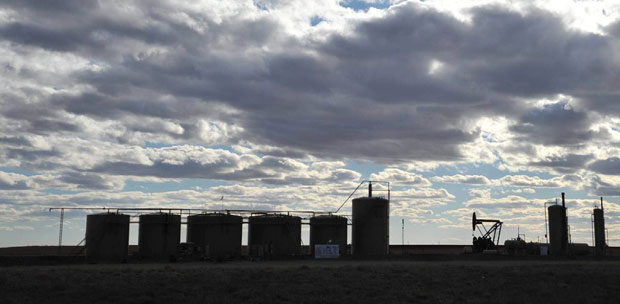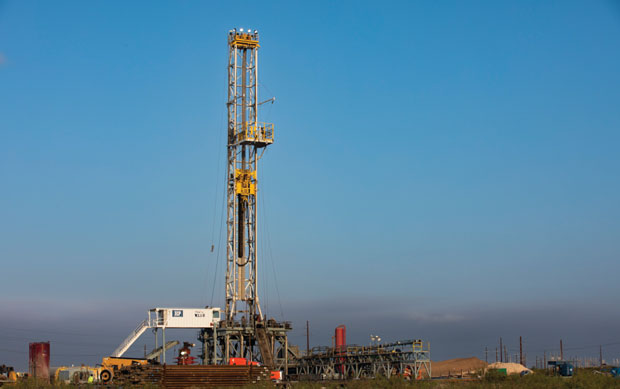
Operators Making Waves In Wake Of Recent Megadeals In Permian Basin M&A
By Danny Boyd
Everything really is bigger in the Permian Basin, including the dealmaking.
All eyes remain fixed on the basin after a string of megadeals over the past 18 months that have involved some of the most pre-eminent names in Permian oil and gas royalty. They include ExxonMobil’s $64.5 billion blockbuster acquisition of Pioneer Natural Resources, Diamondback Energy’s $26 billion deal for Endeavor Energy, Occidental Petroleum’s $12 billion buyout of CrownRock, and APA Corporation’s $4.5 billion purchase of Callon Petroleum.
The latest announcement came on May 29, when ConocoPhillips broke the news that it had agreed to a $22.5 billion agreement to acquire Marathon Oil and its 140,000 net Permian acres.
Individually, each of these deals is a massive move in a region of immense importance to U.S. oil and gas production. Collectively, this tidal wave of mergers and acquisitions is of a magnitude that doesn’t come around very often. When they do, they tend to have all kinds of ripple effects in terms of creating openings for spin-outs, spin-offs, and new startups in the months and years ahead.
M&A is ingrained in Devon Energy’s DNA. In fact, Devon roughly doubled its position in the basin after a landmark 2021 merger of equals with WPX Energy. But John Raines, Devon’s Delaware Basin vice president, says the Oklahoma City independent will continue to set a very high bar for any potential Permian additions.
After evaluating logs on a Wolfcamp B appraisal well, Devon Energy lowered the planned landing depth at its Thistle Development in Lea County, N.M. The result was a 30-day initial production rate of 5,900 barrels of oil equivalent a day. The well has been on line for 100 days and is just starting to show a production decline.
“There have been a lot of rumors linking us to some of the recent deals, and I think a lot of that is because we have a history of doing M&A,” Raines says. “We are always looking for ways to improve our portfolio, but we are not interested in pursuing M&A that does not align with our objectives.”
What do those objectives consist of exactly? According to Raines, Devon plans to continue to prize accretive benefits, strategic fits for its portfolio, potential operating synergies, and the availability of quality inventory in any acquisition opportunity. “There has certainly been a lot of M&A activity in the Permian, and there is likely more to come,” he insists.
Amid all the big consolidation moves, Devon remains busy assessing different horizons. Recently, as the company was preparing to test the Wolfcamp B interval for the first time in its Thistle Area in Lea County, N.M., it was able to incorporate rock data it had recently acquired that prompted it to lower the planned landing depth for the well. The result was a 30-day initial production rate of 5,900 barrels of oil equivalent a day, which so far has outperformed the handful of other Wolfcamp B tests by other operators in the area.
“That well has been on line for right at 100 days now and we are just starting to see a decline,” Raines says. “It’s a beast.”
Although the deeper Wolfcamp typically includes higher gas rates, oil and condensate cuts are strong enough for Thistle and other areas to compete internally for capital, he elaborates. More will be incorporated into future multizone developments in 2025 and beyond.
“We are in varying degrees of Wolfcamp B assessment across the entirety of our position,” Raines explains. “The Thistle area was one of the more immature areas, but we feel better about it with the recent success we have had.”
The company is running 16 rigs and recently has moved from four completion crews to three, mostly in New Mexico, where Devon’s inventory is concentrated. Devon recently brought on the 13-well Van Doo Dah project in the Cotton Draw area of Lea County two weeks ahead of schedule at peak flow rates of 30,000 gross barrels a day from the Wolfcamp A. Additionally, 30-day IPs on each of six upper Wolfcamp wells averaged 5,600 boe/d in the Stateline area straddling Eddy County, N.M., and Reeves County, Tx., where a land trade enabled three-mile lateral lengths, Raines notes. Recoveries are projected to exceed 2 million boe per well.
To accommodate growth, the company is spending roughly $100 million annually on field-level gas and water management infrastructure. Devon also has expanded its gas processing capacity through key partnerships, and also will benefit from having 10% of capacity on the 2.5 Bcf/d Matterhorn pipeline scheduled to come on line later in the year.
In addition, Raines says Devon’s joint venture with WaterBridge provides significant optionality for produced water, and the company is expanding self-generated power capacity and microgrids to ensure adequate electric power supply because of potential shortages in the basin.
Infrastructure Build-Out
Even as operators all of sizes position for the future, more than 300 rigs are turning to the right across the Permian. As always, there’s a bounty of resource play targets—from the Wolfcamp and Bone Spring to the San Andres and Clear Fork—and seemingly every interval in between.
As it has developed its oil-rich 135,000 net acres in the eastern Midland Basin, HighPeak Energy Inc.’s commitment to investing in infrastructure over 3.5 years has prepared the company for a future that may include a merger, says President Michael Hollis.
Among these projects has been water handling infrastructure for produced water that now provides 95% of HighPeak’s needs. Horizontal saltwater disposal wells have been developed to diffuse disposal and lessen the risk of inducing any seismic activity, he explains.
A 10-megawatt solar farm that commenced operation in May reduces operating costs and emissions with rigs now powered by solar during the day and the grid at night, Hollis goes on. Also, modern, centralized tank batteries on its Howard County position will require no upgrades to meet emissions standards and can be easily expanded.
Early fruits of the build-out include a 26% decline in lifting costs, according to Hollis. Going forward, incremental investments as needed will easily accommodate growth as executives weigh options for what they insist is one of the largest available inventories in the Permian.
Hollis says a larger suitor with more financial resources can easily and quickly double production, which now averages 50,000 boe/d on a position that is 81% oil and 90% liquids.
HighPeak Energy Inc.’s commitment to investing in infrastructure as it has developed its oil-rich, 135,000-net acre position in the eastern Midland Basin includes building out water handling infrastructure and horizontal saltwater disposal wells, and a 10-megawatt solar farm to power drilling rigs and in-field operations.
HighPeak’s leasehold includes 2,600 drilling prospects. Of that total, 1,150 have a breakeven cost below $50 a barrel, but that number may fluctuate as the company assesses the Wolfcamp C, Middle Sprayberry and other benches beyond the bread-and-butter Lower Sprayberry and Wolfcamp A.
Wolfcamp C wells, especially at its Signal Peak development in southern Howard County, are expected to have similar production capacity of more than 60 barrels a foot as the Wolfcamp A at the same cost, Hollis says.
“Almost all of the Signal Peak area looks to be prospective of that zone, so with six wells per section, we could put a couple hundred locations in the Wolfcamp C alone there,” he remarks. “We are going to start delineating and looking at that over time.”
The Middle Sprayberry looks attractive in Signal Peak as well, he adds, but most development in the bench is occurring offset to Flat Top in the north.
“We knew the zone was there because we get oil coming to surface as we drill through it to get to the deeper zones,” Hollis says. “It is all about commerciality. Being a smaller company, we like to do a lot of our exploring by watching results from other companies. When we see folks getting good results in some of these other zones offsetting ours, we usually fall in quickly behind them.”
Growing Production
As players across the basin continually assess benches and growth options, Permian Resources continues to expand through the drill bit, acquisitions and bolt-ons. Running a dozen rigs and three or four frac spreads on a 250-well program this year, the Midland-headquartered company has grown production to 320,000 boe/d, of which 152,000 barrels is crude oil, Co-Chief Executive Officer Will Hickey points out.
Production is expected to grow an additional 3,500 boe/d after integrating grassroots and working interest additions and two largely undeveloped bolt-ons of 11,200 net acres offsetting the company’s Parkway development in Eddy County.
Formed in September 2022 with the merger of Centennial Resource Development and Colgate Energy Partners, Permian Resources holds more than 400,000 net acres counting its acquisition of Earthstone Energy last year.
“Our overall objective is to target acquisitions that enhance the quality of our business and drive value for shareholders,” says Co-Chief Executive James Walter. “For us, that means seeking out acquisitions that increase the quality and duration of our current inventory at prices that make sense. Our recent acquisitions achieve all of these goals.”
Accelerated drilling and completion efficiencies in Earthstone’s former operations included an 18% reduction in drilling days per well and a 50% reduction in completion days per well, Hickey says.
“When we rolled out the Earthstone acquisition, we were highly confident that we could reduce days and completion times and improve production operations, driving material synergies to be fully realized by year-end 2024,” he comments. “We have already achieved that and more.”
The company also has seen some unanticipated efficiency gains in the Midland Basin, a testament to the operations team’s ability to unlock value by improving run times from better compression performance, optimizing artificial lift and improving chemical programs, Hickey adds.
With acquisitions tending to flow to low-cost operators over time, Walter says the company’s corporate presence in Midland helps. “We are based in Midland, in the heart of the Permian, the heart of the deal flow, and we have a great reputation in the market for being good partners that people want to be across the aisle from on the transaction side,” he says.
The company also enjoys an information advantage from more rigs running on its position that translates to more proprietary data from which to gain a better understanding of offsetting properties, Walter adds. Although the size of available additions tends to be smaller than those of the previous two years, there will continue to be opportunities, including for off-market assets like the recent bolt-ons, he says.
Vertical Well Development
Assessing potential bolt-ons and existing prospects is helping Texland Petroleum LP direct growth for conventional waterflood projects on the Central Basin Platform, says company President Jim Wilkes.
“We are looking for things that we can bolt on and waterflood to enhance production in an area that may be underdeveloped,” says Wilkes, immediate past chairman of the Independent Petroleum Association of America. “These days, we typically put together a package of about 10 wells, drill, evaluate what we did, and then come back later on and put another package together.”
Texland Petroleum LP is focused on 3-D seismic-guided vertical drilling projects on the Central Basin Platform, with all new wells designed for waterflooding to sweep oil from low-permeability formations, namely intervals in the San Andres and Clear Fork formations.
About 20 wells are planned this year on a position with more than 700 producing vertical wells and additional injectors that produce 6,000 bbl/d of oil.
Leasing can be challenging because minerals often are held by the majors or have been passed down to multiple heirs. However, the Fort Worth-based company is deploying 3-D seismic data to analyze potential new development opportunities that can include step outs and infill development, all while avoiding assets with a lot of plugging liability, Wilkes relates.
About 90% of production is from the San Andres and upper and lower Clear Fork intervals. Well designs include a deep surface pipe string to protect the well from the corrosive Santa Rosa zone. Surface casing is cemented back to surface.
Texland then runs 5.5-inch casing to total depth and also cements it back to surface. Since the target zones are dolomite, completions consist of an acid job with ball sealers. The team then swabs and tests the well to determine whether a frac is needed.
With fracs extending vertically as well as horizontally from the wellbore, a typical interval may be on the order of 200 feet thick. On the low end, a frac may include only 20,000 pounds of sand.
“If we do pump a frac, it will be a very small treatment because there is always water sitting right underneath the zone,” Wilkes says. “Any sizeable frac can intrude into oil-water contact and the well will produce a lot of water.”
In all new drilling, waterflooding is anticipated from the outset because of the low-permeable rock with “dead” oil, he says. Generally, the company does pattern floods on typical 1-to-1 injector-to-producing well ratios.
Although Texland has drilled horizontally and drills directionally, most of its acreage lacks unconventional potential. Conventional work also is best for a company that self-finances, Wilkes points out.
“The cost for vertical wells is $1 million-$2 million per well, which is a fraction of the cost for an unconventional well,” he explains.
Permian Expansion
In recent months, U.S. Energy Development Corp. has committed $500 million to 10 acquisitions, including nonoperated interests in the Midland and Delaware basins, and acquiring additional interests in operated Delaware Basin locations. This year, the company will participate in upward of 100 horizontal wells, reports Chairman and Chief Executive Officer Jordan Jayson.
Although it has significant nonoperated reserves, U.S. Energy Development Corp. continues to add Permian assets and build its operated position.
The Fort Worth-headquartered company continues to add Permian assets and build its position with the goal of achieving a 50/50 split in operated versus nonoperated projects over the next three years.
Consolidation across the Permian means additional partnership opportunities, Jayson says. “We are opportunistic and flexible when it comes to deal size and structure,” he comments. “We want to be considered a good partner and can bring value to the table as companies further develop core areas and possibly divest of noncore assets.”
Strategic partnerships over the past 18 months include a $300 million commitment to participate in the development of 75 near-term Midland Basin horizontals. A second transaction includes a 25% interest in 60 Delaware Basin wells to be developed over the next 24 months.
In addition to strategic joint ventures, the company is aggregating various interests in single pad units having clear development timelines.
“We are looking at larger, quick-cycle type deals between $1 million and $25 million, and then assessing strategic transactions to participate in other companies’ development plans, anywhere from $100 million to $300 million,” Jayson says.
Altogether, the company is managing production of some 30,000 boe/d on behalf of itself and its partners, Jayson relates. He adds that the company is actively pursuing numerous operated projects with hopes of transacting this later this year.
“We are pursuing transactions with the aim of allowing us to continually be operating two rigs throughout 2025,” he adds.
Jayson did not disclose partnership details, but did acknowledge the firm’s joint venture interests with large public companies, including several majors, and private players.
Although it has significant nonoperated reserves today, U.S. Energy also operates 80 horizontal wells and counting across its Permian, Eagle Ford, and Mid-Continent positions. The Delaware Basin, however, continues to be the focus for the firm’s recent operated projects. Strong results from the five-well JT Morris pad in Reeves County include a combined 5,000 boe/d, about 85% of which is oil produced through restricted chokes, Jayson concludes.
For other great articles about exploration, drilling, completions and production, subscribe to The American Oil & Gas Reporter and bookmark www.aogr.com.



















